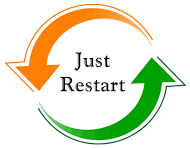Elevated Efficiency: The Industrial Shift Toward AWPs
Aerial Work Platforms (AWPs), also known as elevating work platforms or mobile elevating work platforms (MEWPs), are mechanical devices used to provide temporary access to elevated and inaccessible areas, typically for maintenance, construction, or installation tasks. These platforms play a crucial role in enhancing safety, efficiency, and flexibility across various industries such as construction, logistics, manufacturing, and utilities.
Aerial work platforms are available in various types, including scissor lifts, boom lifts (articulating and telescopic), vertical mast lifts, and personal portable lifts. Each type is designed for specific applications based on height requirements, load capacity, and mobility. For instance, scissor lifts are ideal for vertical lifting in narrow spaces, while boom lifts offer extended horizontal and vertical reach, suitable for tasks in complex environments.
One of the primary advantages of aerial work platforms is their ability to reduce the risks associated with working at heights. Unlike traditional ladders or scaffolding, AWPs provide a stable and enclosed workspace, minimizing the chances of falls or injuries. Many models come equipped with safety features such as guardrails, fall arrest systems, emergency lowering mechanisms, and non-slip surfaces.
Technological advancements have led to the development of electric-powered and hybrid aerial platforms, offering cleaner operation and reduced noise levels, particularly suitable for indoor use or noise-sensitive environments. Additionally, modern AWPs are being integrated with smart control systems, sensors, and telematics, allowing real-time monitoring, diagnostics, and enhanced operator training.
The demand for AWPs is increasing globally due to growing construction activities, infrastructure development, and stringent safety regulations. The rental market for aerial work platforms is also thriving, providing cost-effective solutions for short-term or project-based needs.
However, challenges such as high initial investment, maintenance requirements, and operator training continue to impact market growth. Despite these concerns, the emphasis on worker safety and operational efficiency is expected to drive further innovation and adoption of AWPs in the coming years.
Overall, aerial work platforms have become indispensable tools in modern work environments, combining height access with mobility, safety, and operational effectiveness.
- Marketplace
- Art
- Causes
- Crafts
- Dance
- Drinks
- Film
- Fitness
- Food
- Jogos
- Gardening
- Health
- Início
- Literature
- Music
- Networking
- Outro
- Party
- Religion
- Shopping
- Sports
- Theater
- Wellness


